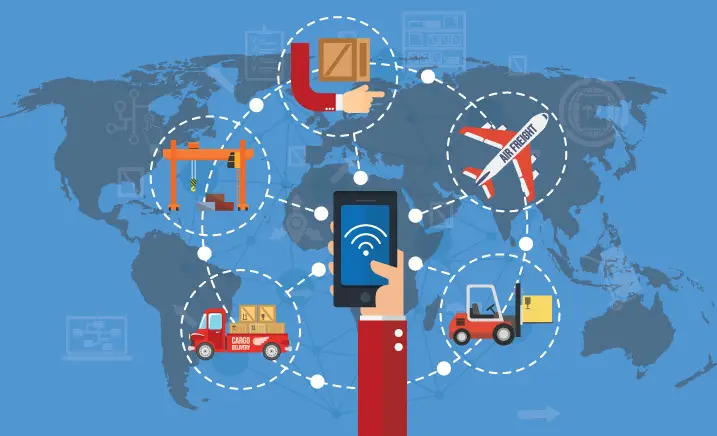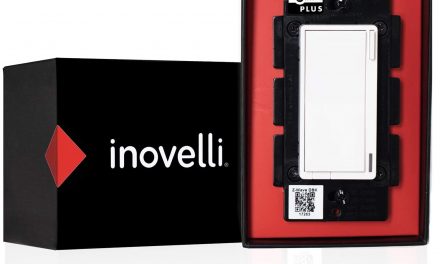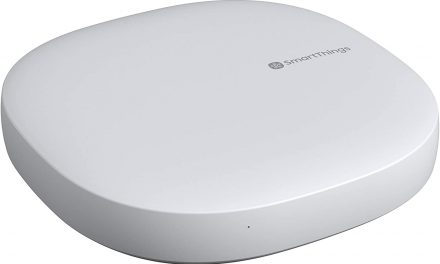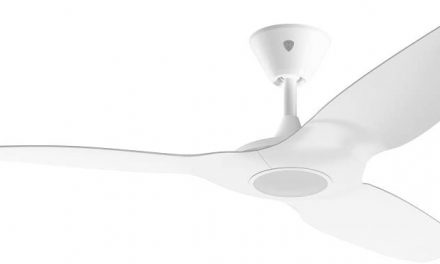Computers have taken over each and every industry. The advent of the Internet of Things that brought computing devices together via cloud computing has resulted in various industries being able to achieve levels of efficiency that were not possible using traditional means. This article explains the various changes in the logistics sector brought by IoT in logistics.
Before we get into IoT in logistics, let us first define the term IoT.
Table of Contents
What is IoT?
The Internet of things is a system of interrelated computing devices, mechanical and digital machines provided with unique identifiers and the ability to transfer data over a network without requiring human-to-human or human-to-computer interaction.
Outdated technologies lead to losses of products to all links in the supply chain. In a study conducted by the semiconductor giant, Intel it was realized that around 30% of products do not reach the end user. This is because the products come into disrepair during the transportation process, they get lost, and get destroyed for other various reasons. This results in the retailers being forced to raise prices to compensate for the poor quality reject items. The transportation companies, together with the organizations that provide shipment and storage of cargo face legal claims from the recipient and the sender of the cargo. All this presents an opportunity for IoT in the logistics sector. Logistics IoT results in new opportunities for supply chain control, delivery productivity as well as reduced resource consumption. Let us explore a few key advantages brought upon by logistic IoT.
Advantages of IoT in Logistics
1. Transportation Control
Logistics IoT devices will allow the companies to track their cargo. This is made possible through logistics IoT sensors such as GPS sensors and RFID tags. This allows the transportation companies to know the exact location of their particular cargo. They can also monitor the condition of the cargo, and to give a more accurate estimated delivery time.
2. Decrease Human Error
It is well known that the majority of accidents are caused by human beings. The use of logistics IoT sensors will greatly reduce human error as common errors such as mixing up products will be eliminated through the use of RFID tags that identify a specific product, thus eliminating the chances of the product being mixed up. Other problems such as theft, and counterfeiting of products will also be greatly reduced.
3. Efficiency
A key advantage of IoT devices is that they improve efficiency. The logistics process will be made better through the use of logistics IoT devices that will boost the efficiency of the personnel as well as the machines. This will result in a reduction in operating costs.
Applications of IoT in Logistics
1. Location Management
In this application of IoT in Logistics, IBM together with the logistics operator AOS have implemented an IoT based platform to track and retrieve information about each vehicle that transports goods. This platform uses various technologies such as IBM’s Cloud technologies cloud computing platform, IBM block chain, and IBM’s Artificial Intelligence powered platform Watson IoT .
There are Logistics IoT sensors – RFID tags that are mounted on the AOS trucks. These have labels which contain the information about the carrier, availability of space in the truck, the cargo, and the location at a particular time. The information is then recorded on the block chain and it allows the company to obtain the necessary information quickly, whilst also providing protection against unauthorized access.
2. Inventory Tracking
In this application of IoT in Logistics, smart shelves are used to help track inventory quickly. This is achieved by the use of RFID tags and weight sensors. This system helps speed up the process of inventory tracking because instead of manually looking for a product and spending hours looking for a single product, the manager is able to use a single application to detect the location of a particular product and know its particular weight. Ferrometal Oy is an example of a company that uses an RFID based smart shelf system.
3. Supply Chain Management Monitoring
In this application of IoT in Logistics, the telecommunications company AT&T launched a supply chain management platform. This platform makes use of the Microsoft Azure cloud computing technology, together with the IBM block chain service. This allows the telecommunication company control over the origin of the materials, the quality of their production as well as the ability to track the shipment from the warehouse of the enterprise right to the end user. A retailer is therefore able to constantly check on the availability of goods in its warehouse using this system.
4. Drone Based Delivery
Unmanned Aerial Vehicles (UAVs), also known as drones, have become popular in the IoT world. These devices are so popular that companies have started to develop Internet of Things solutions just for drones, and this is referred to as the Internet of Drones.
In this application of logistics IoT, the logistics company DHL, together with the drone manufacturer EHang have developed a new generation drone that delivers small parcels by air. This solution is fully automated. The drone is equipped with a GPS navigator. This is used to feed it with the real time coordinates. The drone independently picks up cargo from special yellow lockers. Each parcel in the locker contains a label which contains the information to whom and where the parcel is to be delivered. Optical sensors are also installed in the drones to make orientation of the drone on the ground more effective. This makes it easy for the drone to identify the right destination.
5. Safety
In this application of IoT in Logistics, the earthmoving manufacturing company, Caterpillar introduces a new driver safety system in its vehicles. This system makes use of Logistics IoT. Each car that belongs to the company comes with smart cameras that are used to detect features on the driver’s face during the trip. The cameras are used to detect the pupil size and blinking frequency. This is used to notify the driver by means of sound or light signals if a critical level driver fatigue is noted.
Conclusion
This article defined the term IoT. The advantages associated with logistics IoT, together with the applications of logistics IoT were given.
We hope you enjoyed the article.






